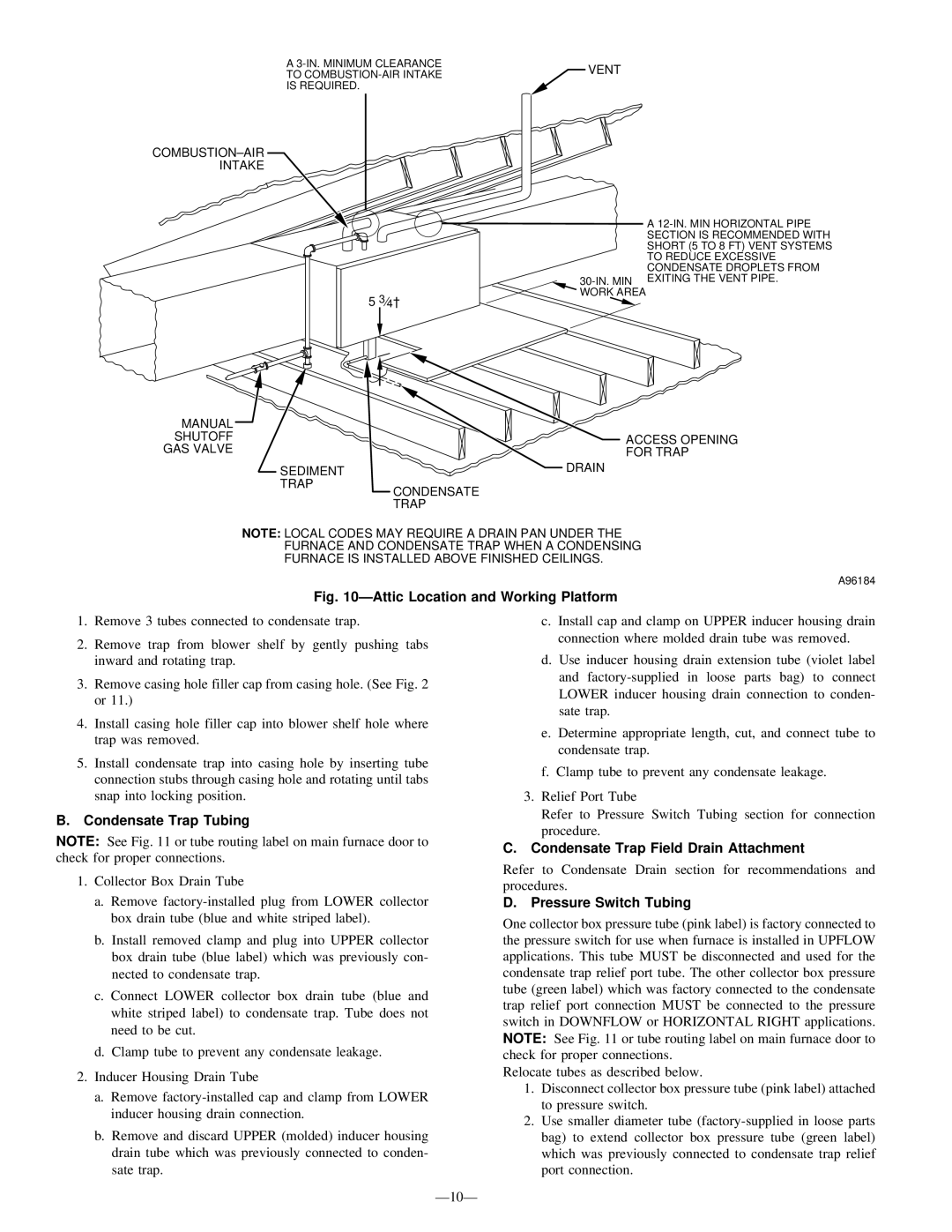345MAV specifications
The Bryant 345MAV is a premier choice in the realm of residential heating and cooling systems, encapsulating advanced technologies, high efficiency, and remarkable performance. Designed for homeowners seeking reliability and comfort, this model exemplifies modern HVAC (Heating, Ventilation, and Air Conditioning) innovations.One standout feature of the Bryant 345MAV is its impressive energy efficiency. With a high SEER (Seasonal Energy Efficiency Ratio) rating, it operates at peak levels while consuming less energy. This not only reduces utility bills but also supports environmental sustainability, making it an ideal selection for eco-conscious consumers. The model employs variable-speed technology, which allows the system to adjust its output based on current heating and cooling needs. As a result, it provides consistent indoor comfort while minimizing temperature fluctuations.
The Bryant 345MAV incorporates advanced refrigerant technologies designed for optimal performance. It uses R-410A refrigerant, which is known for its lower environmental impact compared to traditional refrigerants like R-22. This environmentally friendly aspect aligns with regulations aimed at reducing ozone depletion, thereby promoting a greener approach to heating and cooling.
Reliability is another hallmark of the Bryant 345MAV. Engineered with precision, this model features a durable build designed to withstand varying weather conditions. The system is equipped with a robust compressor that is engineered for longevity and minimal noise during operation. Homeowners will appreciate the quiet performance of the 345MAV, ensuring peace in their living spaces.
Comfort also extends to the user experience with the inclusion of a smart thermostat option. This integration allows homeowners to manage their heating and cooling systems remotely, enhancing convenience and control. Programmable settings can optimize energy use based on individual schedules, facilitating both comfort and savings.
In summary, the Bryant 345MAV is a top-tier solution for residential climate control, blending energy efficiency, innovative technology, and unmatched reliability. With its variable-speed operation, environmentally friendly refrigerant, and smart features, the 345MAV represents a significant advancement in the HVAC field. Homeowners investing in this model can expect a system that not only meets their heating and cooling needs but exceeds them in terms of efficiency and comfort.

